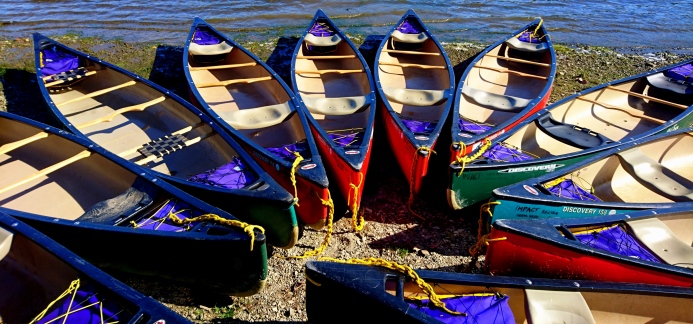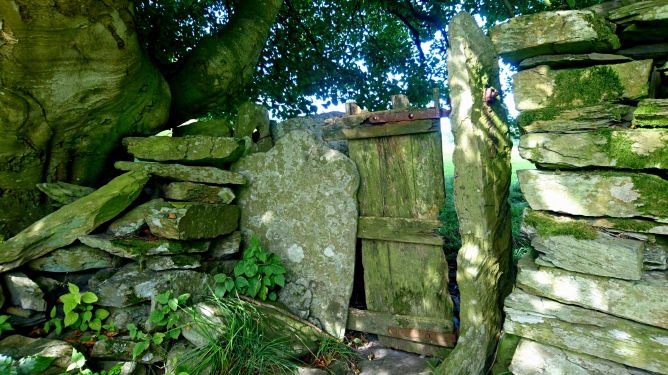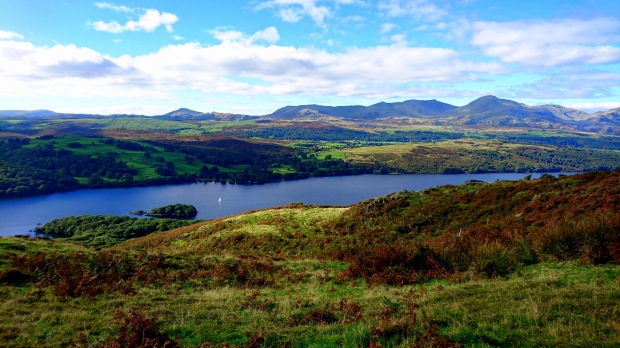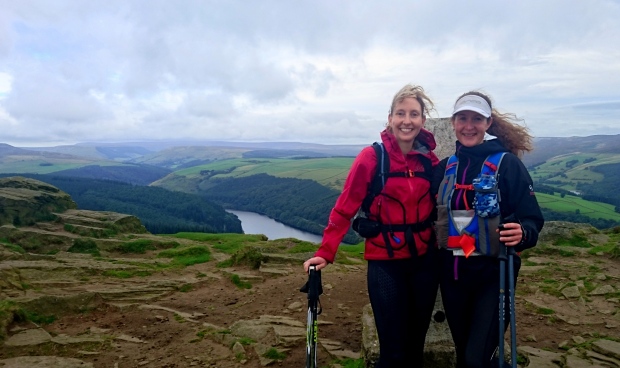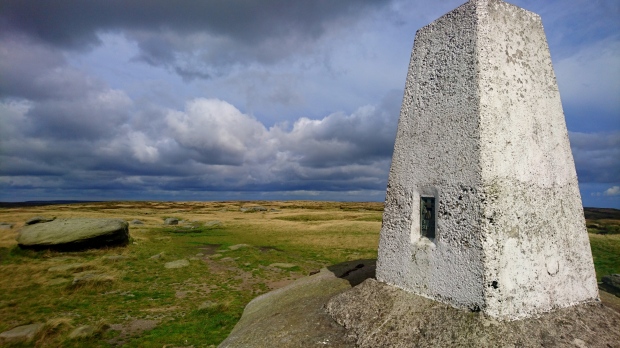Route: From Grantown on Spey to Aviemore with a circular loop visiting Loch an Eilein, 26.33 miles

The day of our final marathon had arrived and we were excited and relieved. The constant pressure of marathon after marathon had left us little time to relax during the last 27 days and we were looking forward to a rest! After much discussion about the forecast for high winds and little to no visibility at 900m, a last minute decision had been made to change the route in the Cairngorms National Park to a low level option. Although we both like to get up high, we see no point when walking conditions are near impossible and you cannot make out each other’s faces!
The new route required us to get a bus out to Grantown-on-Spey in the morning. With the weather due to worsen during the day, we had agreed to get the first bus out in the morning. By 6:40am we were ready and hastily made our way to the nearby bus stop. Unfortunately, our haste resulted in Pam going over on her ankle and she winced in pain as she made the last few steps to the stop. Pam quickly shrugged off her discomfort and assured me that all was ok. Once again, we marvelled at another red sky that lit up the Cairngorm plateau as the sun rose to the East of it as the bus took us to our start point. We both wished that we could stop and get some proper pictures but instead committed to freezing the images in our minds.
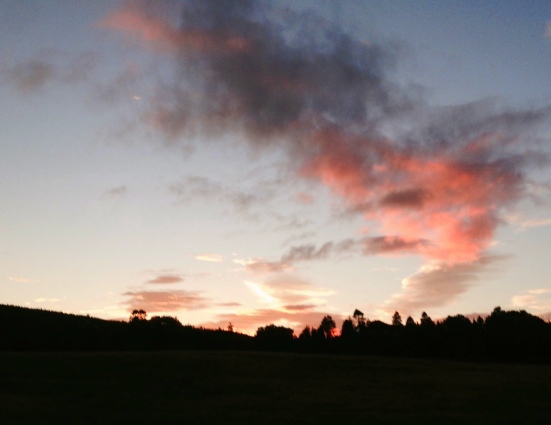
By 7:25am we had reached our destination and piled off the bus to start our last and final run. Our route followed the Speyside Way, a disused railway line, consisting of gentle grassy paths and gravelled tracks in excellent condition. The track was fun to run on and we had to reign ourselves in as we completed the first couple of kilometres in record time. Bouncing along with our poles tapping the ground, sheep, cows and even a couple of red deer looked on in interest. We were clearly a strange sight made stranger by the tapping noise that we were making and vibrations that passed through the ground.
Passing through Nethy Bridge, a small group that was congregated on the forest track in front of us, shouted “Welcome!” as we passed; clapping and cheering us on our way. We had no idea who they were and were quite embarrassed by the reaction we got. We hurriedly went on our way, only later wishing that we had engaged them in conversation. They looked like they had a clear purpose in mind and we would have loved to have known what they were up to. With my left leg getting very tired and weary once more, I was relieved when Pam suggested that we stopped at the next village for a reviving cup of tea.

We entered Boat of Garten, a small village with excellent views of the River Spey and Cairngorm hills beyond. Feeling somewhat underdressed, we entered a very smart hotel to seek refuge from the weather and to purchase a hot drink. The receptionist kindly took pity on us and ushered us into a very stylish bar area. We did not want to sit down for fear of messing up the leather seats and were cautious not to leave muddy footprints on the wooden floor! We need not have worried as all the staff remained remarkably friendly to us throughout our visit; even giving us some quality fudge to go with our pots of tea.
Over to Pam…….
Finding it hard to pull ourselves away from the warmth of the hotel bar but realising that we were getting too comfortable, we rain-jacketed up and stepped out into the rain. Although the weather was forecast to be OK until mid-afternoon, the rain and wind were coming in fits and starts; all slightly frustrating with the whole jacket on, jacket off situation. Still the end of this challenge was so close by now that the remaining 15 miles would hopefully seem to be simply a walk in the park (or rather a run in the park!).
The beauty of following a well-established route such as the Speyside way is that navigation is far easier, allowing us more time to relax and enjoy the whole experience; which we did. The short road section soon turned back into gravel tracks as the wood enveloped us for a second time. The moving on of the seasons was really apparent here in the changing colours of the silver birches, as was the growing carpet of fallen leaves and cones. Only the Douglas firs were fully retaining their foliage.
It was not long before the forest opened up into large expanses of heathland, the bilberry bushes being swapped for swathes of heather. The wind has dropped slightly too and there seemed to be almost a brief amnesty from the dark grey clouds over the distant Cairngorms Plateau, as the sun temporarily broke through to afford us stunning and atmospheric views across to the mountains. It was at this point that it hit us how beautiful this glen walk was. Like in the Lake District when we did the lower-level Coniston Marathon route, we were pleasantly surprised and impressed with the level of enjoyment that we were feeling. Both marathons have reminded us to explore all of the areas that these special National Parks have to offer, not just those up high. There are amazing views all over and for times of bad weather or simply on days set aside for rest, routes like the Speyside Way are fantastic opportunities to see these parks from a different perspective.
The bad weather reprieve over too soon as the strong winds up high forced the dark storm clouds to swallow up the mountains again. Congratulating ourselves a second time on the wise decision to change our route, we strode out, thoroughly relishing the fast, comfortable trail under our feet. The appearance of a golf course ahead of us indicated that we must be getting close to Aviemore, our next refuelling stop.
 Choosing to run the Aviemore Orbital track to maximise on the off-road paths, instead of traipsing along the main road, we dropped into town just a few hundred metres from the amazing Mountain Café. Unfortunately we had not realised that it was closed on Wednesdays. Slightly disappointed, we continued on in search of a suitable replacement, promising to return the next day for coffee and a slice of one of their fabulous cakes.
Choosing to run the Aviemore Orbital track to maximise on the off-road paths, instead of traipsing along the main road, we dropped into town just a few hundred metres from the amazing Mountain Café. Unfortunately we had not realised that it was closed on Wednesdays. Slightly disappointed, we continued on in search of a suitable replacement, promising to return the next day for coffee and a slice of one of their fabulous cakes.
Successfully finding a great substitute in Ashers Bakery, just a short distance down the road, we piled into its warmth, the wonderful smells making us start to salivate. With so much choice, we found it hard to narrow our decision down to only one savoury and one sweet option each. The friendly ladies behind the counter were curious and surprised at the amount of food that we had ordered. Trying to explain our efforts so far that day and hence the source of our hunger seemed to leave them only more confused.
“What are they doing?!” one whispered to another, when she thought that we were out of earshot!
Oh well, obviously a few more in the ‘think we’re crazy’ camp then!
Fed and watered, with a quick stop back at the van to swap a water bottle for our filled hip flasks and we were back on our way to finish off the final seven miles. Trying to keep to the low-level route theme, we had decided on a circular loop from Aviemore, via Loch an Eilein, to complete this 15th marathon. This time we swapped the Speyside Way for the Old Loggers Way, along to Coylumbridge and down through another wooded section to the Loch. Our plan was to take this last section gently since by this stage Claire’s knee and my ankle that I had so stupidly rolled at the start of the day were beginning to play up. The shear fatigue in our legs meaning that our muscles were no longer able to protect our joints as well and the repeated battering and bruising that they were experiencing was starting to make itself known to us continuously now.
Again, the beautiful scenery provided sufficient distraction to keep us pushing through. That and an interesting conversation with a local guy, called Neil McGuiness who was out walking his trusty terrier Becky. Very much keen to spend a minute or two chatting, he inquisitively asked after our day and of our reasons for running along one of his favourite dog-walking routes. This time our explanations seemed to make sense, especially as we mentioned that one of the science focuses for this National Park was to incorporate the physics behind whisky distilling. It turned out that Neil had worked as a truck driver for Chivas Regal, travelling all over the country to deliver this much desired liquid. He was also quick to point out some of the practicalities involved that we had not even thought about. For example, the difficulty in transporting a semi-full tank compared to transporting a full one and its effect on stopping distances and cornering. A full tank allows the tank and whiskey to act as one since there is no room for the whisky to bounce and reflect off the sides of the tank; the centre of mass of each acting together from one point so returning to a stable position quickly. This means that if the tank quickly comes to a standstill, so does the whisky. However, with a semi-full tank, the whisky has room to slosh around, reflecting off the sides of the tank causing a large additional and delayed force on the sides of the tank. The momentum of the liquid slows down the motion of the tank as it rights itself to be stable again, resulting in much slower braking or turning to maintain stability.
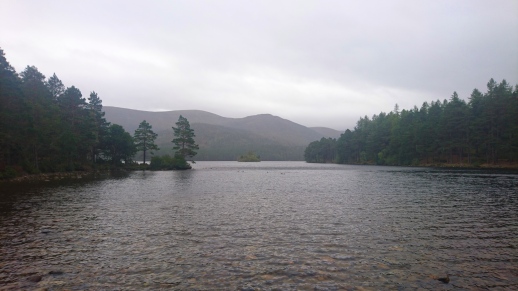
With a friendly goodbye, we continued on, hampered more and more by our aches and pains and increasingly grateful for the easy access of the path. The National Park have put a lot of thought into the accessibility of their trails, most suitable for wheelchairs, pushchairs and exhausted, limping runners! Eventually, the loch came into sight, a beautiful place to walk and cycle around, or simply to sit and take in the views. The availability of another cup of tea from the small visitor centre was much welcomed, along with a wee sip or two from our hip flasks; part of our pact to celebrate our final effort. With only three miles to go, we felt that we could indulge in this small treat.
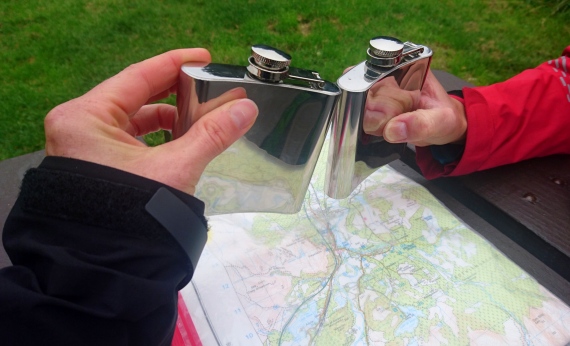
Completing those final miles was more a case of relief rather than pleasure since my ankle had started to balloon impressively and the pain in Claire’s leg was severely limiting her ability to bend her knee. Between our injuries, we finished this whole challenge resembling more like lame zombies than sprite runners, but at least we finished!! What an adventure it has been and a delight to finish it off in this stunning National Park. We have had so many fun (and tough) experiences that we will definitely look back very fondly on this in years to come.
Our final ‘mission’ was to shower and drag ourselves down to the Cairngorm Hotel for a celebratory glass or two of prosecco, with a tasty Mexican dinner to follow!

One last mention must go to Brian McCormack, a retired teacher who we met in said pub and who regaled us with funny tales of his time teaching and his past adventures in the amazing Cairngorms. Hopefully, he will successfully navigate his way through the complexities of the internet, without the aid of his beloved Maureen, to read this blog. We sincerely hope so.








 Choosing to run the Aviemore Orbital track to maximise on the off-road paths, instead of traipsing along the main road, we dropped into town just a few hundred metres from the amazing Mountain Café. Unfortunately we had not realised that it was closed on Wednesdays. Slightly disappointed, we continued on in search of a suitable replacement, promising to return the next day for coffee and a slice of one of their fabulous cakes.
Choosing to run the Aviemore Orbital track to maximise on the off-road paths, instead of traipsing along the main road, we dropped into town just a few hundred metres from the amazing Mountain Café. Unfortunately we had not realised that it was closed on Wednesdays. Slightly disappointed, we continued on in search of a suitable replacement, promising to return the next day for coffee and a slice of one of their fabulous cakes.



 A short drive later and we were in position at Bridge-of-Orchy station ready for our tramp up Coire an Dothaidh. Bothy shelter, warm kit, GPS and radioactivity meter packed, we were good to go for our morning ascent. Our Science topics of the day were to be the material science involved in outdoor gear and background radioactivity. We confidently strode up and along the track which followed the river up to its source. It was not long before we slowed for fear of sweating too much. By going too fast, we were at risk of having to endure the constant battle of multiple clothing changes and experience had taught us that it was best to avoid this. With the sun now risen, mountains and rivers started to creep out from the clouds which smothered them. We stopped to look around and marvel at the glens which stretched out below us.
A short drive later and we were in position at Bridge-of-Orchy station ready for our tramp up Coire an Dothaidh. Bothy shelter, warm kit, GPS and radioactivity meter packed, we were good to go for our morning ascent. Our Science topics of the day were to be the material science involved in outdoor gear and background radioactivity. We confidently strode up and along the track which followed the river up to its source. It was not long before we slowed for fear of sweating too much. By going too fast, we were at risk of having to endure the constant battle of multiple clothing changes and experience had taught us that it was best to avoid this. With the sun now risen, mountains and rivers started to creep out from the clouds which smothered them. We stopped to look around and marvel at the glens which stretched out below us.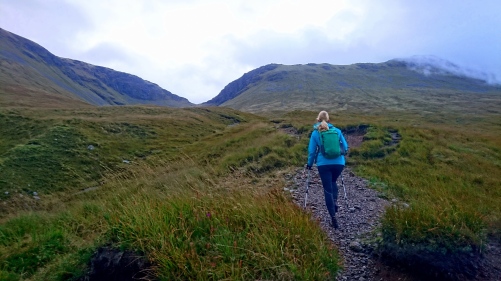 We soon approached the saddle at the top of the coire and turned right to walk along the ridge line that led to the summit of Beinn Dorain. We could see the cloud base sitting a short height above us at about 700m. As we started to prepare ourselves for the wet, cooler conditions that we would soon envelop us, a pair of rare ptarmigans came in to view. We stood dead in our tracks, keen to stop and stare at this rare and privileged sight. Pam quietly got her camera out and hastily took a few photographs of them.
We soon approached the saddle at the top of the coire and turned right to walk along the ridge line that led to the summit of Beinn Dorain. We could see the cloud base sitting a short height above us at about 700m. As we started to prepare ourselves for the wet, cooler conditions that we would soon envelop us, a pair of rare ptarmigans came in to view. We stood dead in our tracks, keen to stop and stare at this rare and privileged sight. Pam quietly got her camera out and hastily took a few photographs of them.

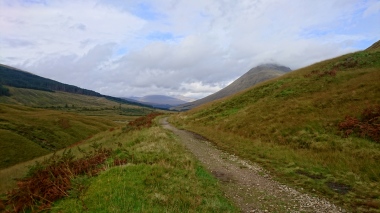 Although a low level route, the views up to the mountain tops and along the glens were still outstanding. With the cloud level rising as we headed towards late morning, we were now able to see the top of the Munro that we had walked up earlier. It was difficult to reign in our speeds as the open, level terrain called out to spin our legs, so it took a fair amount of self-control not to over push our efforts. We still had a reasonable distance to run, as well as one more marathon in the Cairngorms in two days time.
Although a low level route, the views up to the mountain tops and along the glens were still outstanding. With the cloud level rising as we headed towards late morning, we were now able to see the top of the Munro that we had walked up earlier. It was difficult to reign in our speeds as the open, level terrain called out to spin our legs, so it took a fair amount of self-control not to over push our efforts. We still had a reasonable distance to run, as well as one more marathon in the Cairngorms in two days time.  What was needed was a coffee stop in Tyndrum. After a steady climb up to meet the road and railway line (Two key features that we would cross many times throughout the rest of the day.), we then had a very pleasant downhill run into our chosen break point. The very busy Green Welly Stop in Tyndrum not only provided much needed coffees and hot pasties but also the opportunity to buy two hip flasks. To celebrate our achievements during this month (and to help numb the now familiar ache in our knees and feet!), we had decided that we wanted to carry a little whisky with us on our final marathon.
What was needed was a coffee stop in Tyndrum. After a steady climb up to meet the road and railway line (Two key features that we would cross many times throughout the rest of the day.), we then had a very pleasant downhill run into our chosen break point. The very busy Green Welly Stop in Tyndrum not only provided much needed coffees and hot pasties but also the opportunity to buy two hip flasks. To celebrate our achievements during this month (and to help numb the now familiar ache in our knees and feet!), we had decided that we wanted to carry a little whisky with us on our final marathon.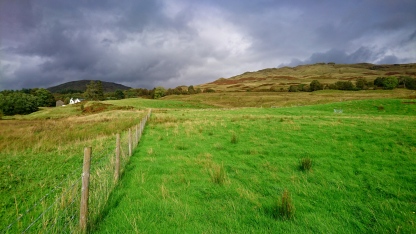 Suitably fed and watered, with new purchases crammed into our small running packs, we were on the road again. From Tyndrum the Old Military Road joined the main highway of the A82 and our path diverted off to a pretty, clearly defined path along the river. Passing through a small woodland and a disused lead mine, followed by a short climb across the heathland, we entered an area of significant historical, environmental and scientific importance. The West Highland Way takes you past the Kirkton and Auchtertyre Farms, where Scotland’s Rural College (SRUC) have established the Hills & Mountains Research Centre. The main purpose of this project is to look into ways to reduce greenhouse gas emissions through economically, environmentally and socially sustainable land management systems (
Suitably fed and watered, with new purchases crammed into our small running packs, we were on the road again. From Tyndrum the Old Military Road joined the main highway of the A82 and our path diverted off to a pretty, clearly defined path along the river. Passing through a small woodland and a disused lead mine, followed by a short climb across the heathland, we entered an area of significant historical, environmental and scientific importance. The West Highland Way takes you past the Kirkton and Auchtertyre Farms, where Scotland’s Rural College (SRUC) have established the Hills & Mountains Research Centre. The main purpose of this project is to look into ways to reduce greenhouse gas emissions through economically, environmentally and socially sustainable land management systems (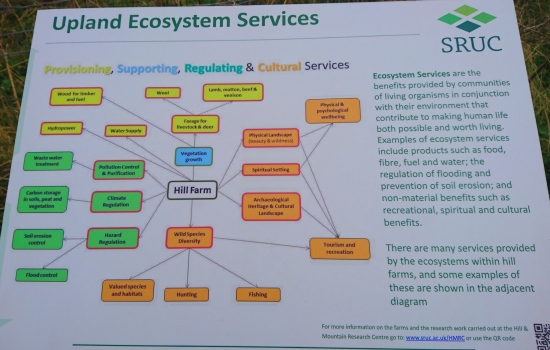
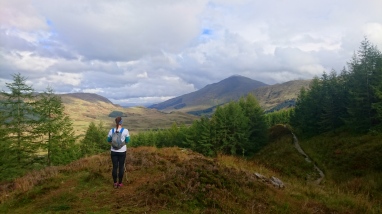 After this interesting conversation, we headed off to start the final ascent of the day, thankfully only a couple of hundred of metres this time, into the forest and still along good tracks. It is always pleasant to have a change in environment to keep our interest constant and we enjoyed the shelter and muted light of the trees and green, mossy carpet. It also coincided with the light rainfall forecast the day before; perfect timing and it saved us from having to dig our rain jackets out of our bags. Eventually the rain lifted and the canopy opened up to amazing views across the valley.
After this interesting conversation, we headed off to start the final ascent of the day, thankfully only a couple of hundred of metres this time, into the forest and still along good tracks. It is always pleasant to have a change in environment to keep our interest constant and we enjoyed the shelter and muted light of the trees and green, mossy carpet. It also coincided with the light rainfall forecast the day before; perfect timing and it saved us from having to dig our rain jackets out of our bags. Eventually the rain lifted and the canopy opened up to amazing views across the valley.

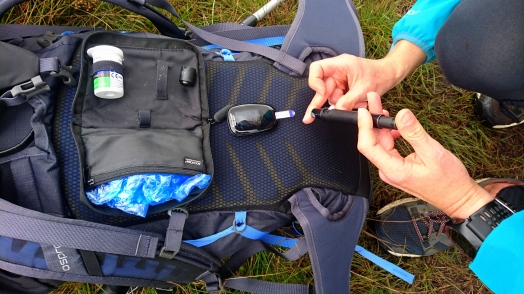

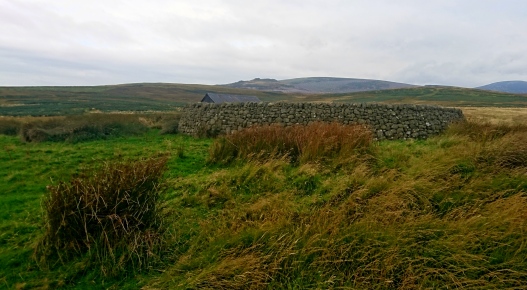
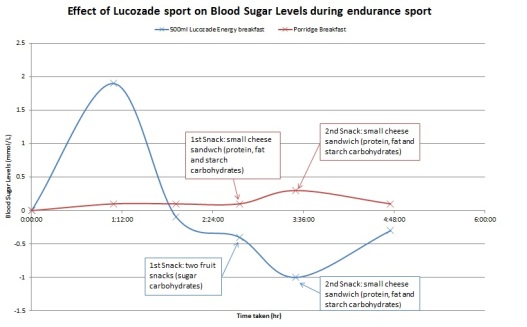
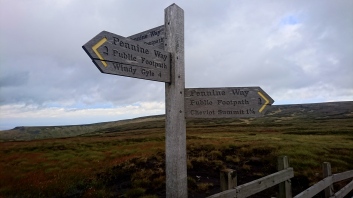 Finally reaching the Pennine Way, both of us were surprised and immensely relieved to see the flagstone path extending ahead of us. Our distant memories of walking this path had dredged up images of bog after bog, something we had secretly been dreading but too afraid to voice to each other. It seemed in 2013, the National Park Authority had put in some very hard labour to build this path, kindly funded by Natural England and for that we were truly grateful. We almost skipped up to the summit, where we met two lovely ladies, equally wind-blown and dishevelled but on good form. With the weather still being kind enough to allow us fantastic views across this remote and wild National Park, it was clear to see how Northumberland takes the crown as the largest Dark Sky Status Reserve in Europe. There are hardly any settlements to create light pollution and it was a shame that we could not afford the time to visit this secluded area at night. The view of the stars and the Milky-Way must surely be amazing from here.
Finally reaching the Pennine Way, both of us were surprised and immensely relieved to see the flagstone path extending ahead of us. Our distant memories of walking this path had dredged up images of bog after bog, something we had secretly been dreading but too afraid to voice to each other. It seemed in 2013, the National Park Authority had put in some very hard labour to build this path, kindly funded by Natural England and for that we were truly grateful. We almost skipped up to the summit, where we met two lovely ladies, equally wind-blown and dishevelled but on good form. With the weather still being kind enough to allow us fantastic views across this remote and wild National Park, it was clear to see how Northumberland takes the crown as the largest Dark Sky Status Reserve in Europe. There are hardly any settlements to create light pollution and it was a shame that we could not afford the time to visit this secluded area at night. The view of the stars and the Milky-Way must surely be amazing from here. Over to Claire……
Over to Claire……

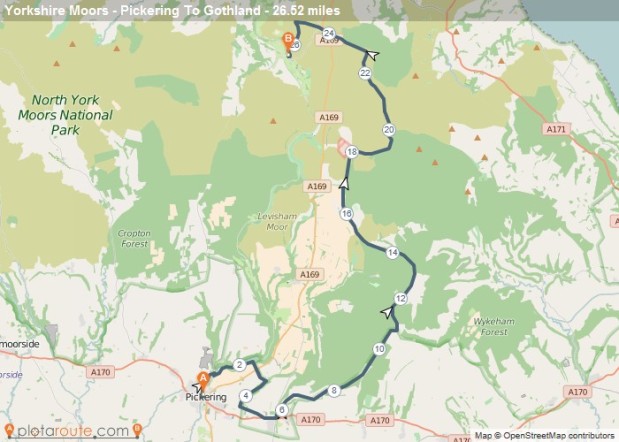

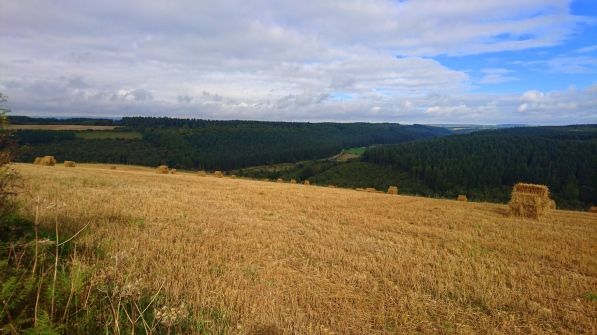
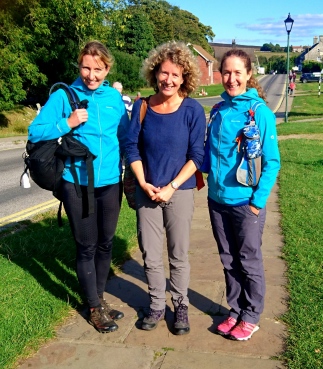 The short break over, it was then time to meet up with Sue. This called for a second cup of tea and the more business-like setting of the tea rooms. Like all of the Education Officers from the different National Parks that we have met so far, Sue is incredibly enthusiastic and motivated about increasing the opportunities for families and schools to experience the beauty of these special places. Her knowledge and passion for this understated but truly captivating Park is second to none and it was fascinating talking to her about the numerous projects that the North York Moors National Park Authority has on the go. One such project is the Explorer Club, an opportunity for 5-14 year old children and their parents to meet up and learn more about the Moors over six sessions. The success of this project clearly shown by the continuing involvement of these families with the Park and their own exploring even after their designated period of learning has finished.
The short break over, it was then time to meet up with Sue. This called for a second cup of tea and the more business-like setting of the tea rooms. Like all of the Education Officers from the different National Parks that we have met so far, Sue is incredibly enthusiastic and motivated about increasing the opportunities for families and schools to experience the beauty of these special places. Her knowledge and passion for this understated but truly captivating Park is second to none and it was fascinating talking to her about the numerous projects that the North York Moors National Park Authority has on the go. One such project is the Explorer Club, an opportunity for 5-14 year old children and their parents to meet up and learn more about the Moors over six sessions. The success of this project clearly shown by the continuing involvement of these families with the Park and their own exploring even after their designated period of learning has finished. So shuffling back into the van, (Frank again in the back!), it was time to head back to the view point at Saltergate. If the morning had been all about forest trails and farmland, the afternoon was very much about the moors. Starting with a quick jog around the Fylingdale RAF Base, most likely monitored by several CCTV cameras, we soon hit the chalky trails of the Worm Sike Rigg bridleway. The short climb uphill opened up to wide open moorland, the heather and moorland plants turning slightly golden in the lower autumn sun. It almost felt as if we were running through the plains in Spain, only the cooler northerly breeze reminding us of where we really were! It really is a very magical environment and we were incredibly lucky to be able to experience it in such beautiful weather.
So shuffling back into the van, (Frank again in the back!), it was time to head back to the view point at Saltergate. If the morning had been all about forest trails and farmland, the afternoon was very much about the moors. Starting with a quick jog around the Fylingdale RAF Base, most likely monitored by several CCTV cameras, we soon hit the chalky trails of the Worm Sike Rigg bridleway. The short climb uphill opened up to wide open moorland, the heather and moorland plants turning slightly golden in the lower autumn sun. It almost felt as if we were running through the plains in Spain, only the cooler northerly breeze reminding us of where we really were! It really is a very magical environment and we were incredibly lucky to be able to experience it in such beautiful weather.
 Fantastic, number 12 done! All we needed to finish off this wonderful day were three very tasty portions of fish and chips (with a large sausage for Frank, of course) and a short stroll around Whitby.
Fantastic, number 12 done! All we needed to finish off this wonderful day were three very tasty portions of fish and chips (with a large sausage for Frank, of course) and a short stroll around Whitby.



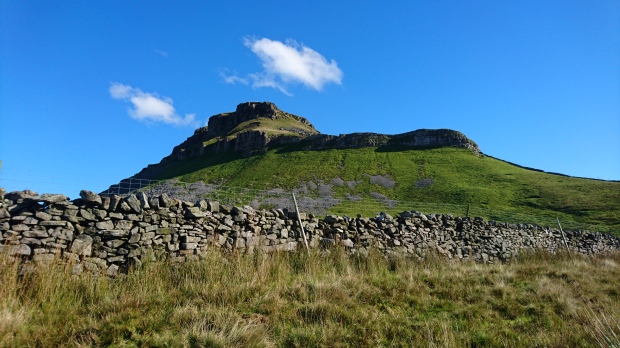







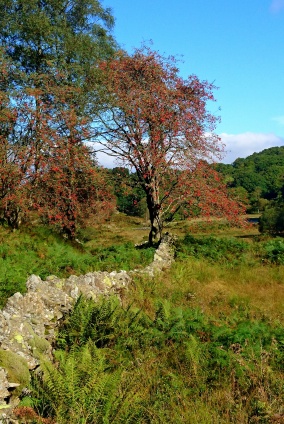 After another short stint along the A593, we were back onto the trails, this time heading towards Tarn Hows. With the huge choice of stunning mountain paths to tempt you to higher ground, it is far too easy to forget the beautiful lowland walks that are also available. The lake side path of Tarn Hows is an excellent example and we met a number of people already clued in on this, making the most of the gorgeous weather.
After another short stint along the A593, we were back onto the trails, this time heading towards Tarn Hows. With the huge choice of stunning mountain paths to tempt you to higher ground, it is far too easy to forget the beautiful lowland walks that are also available. The lake side path of Tarn Hows is an excellent example and we met a number of people already clued in on this, making the most of the gorgeous weather.